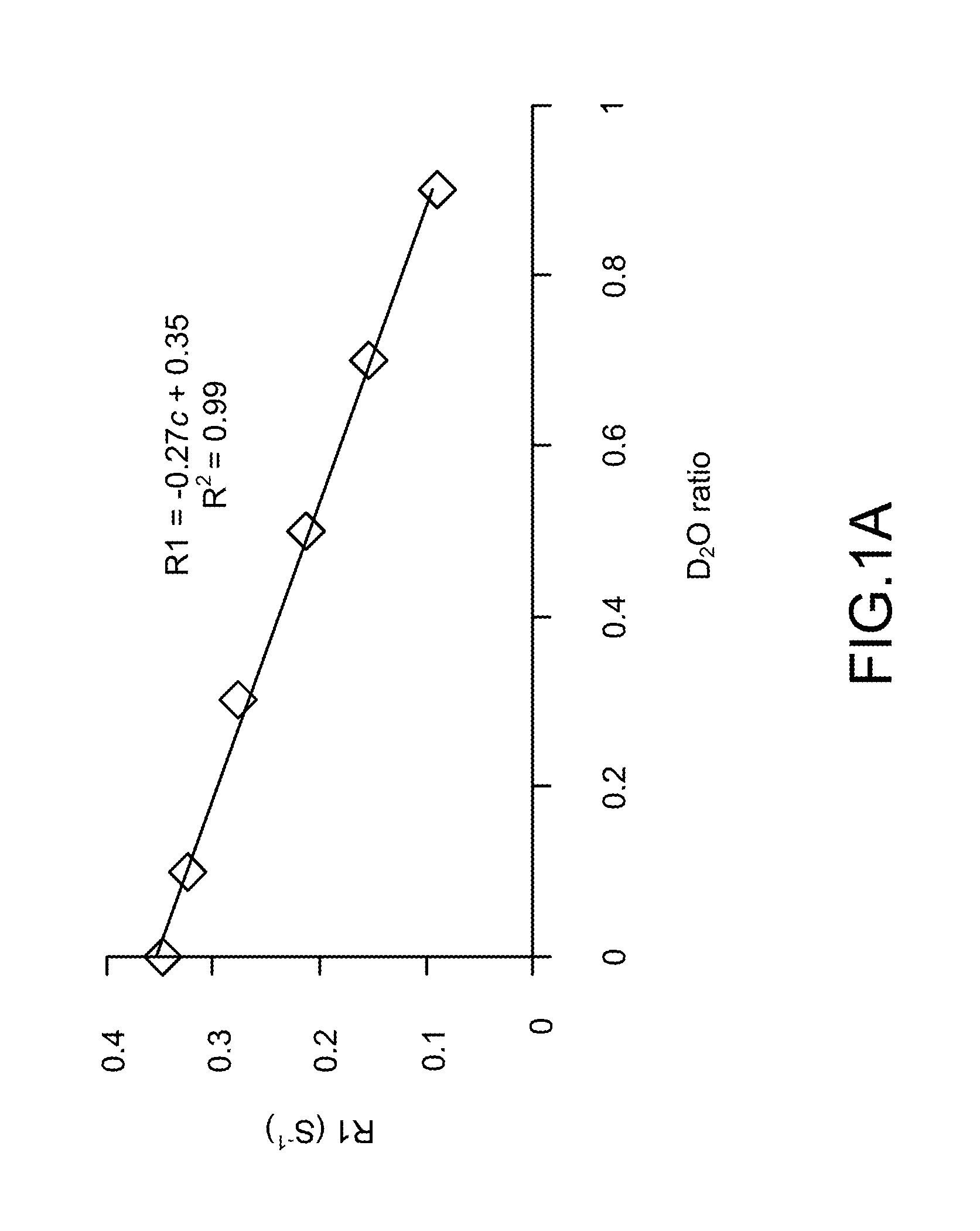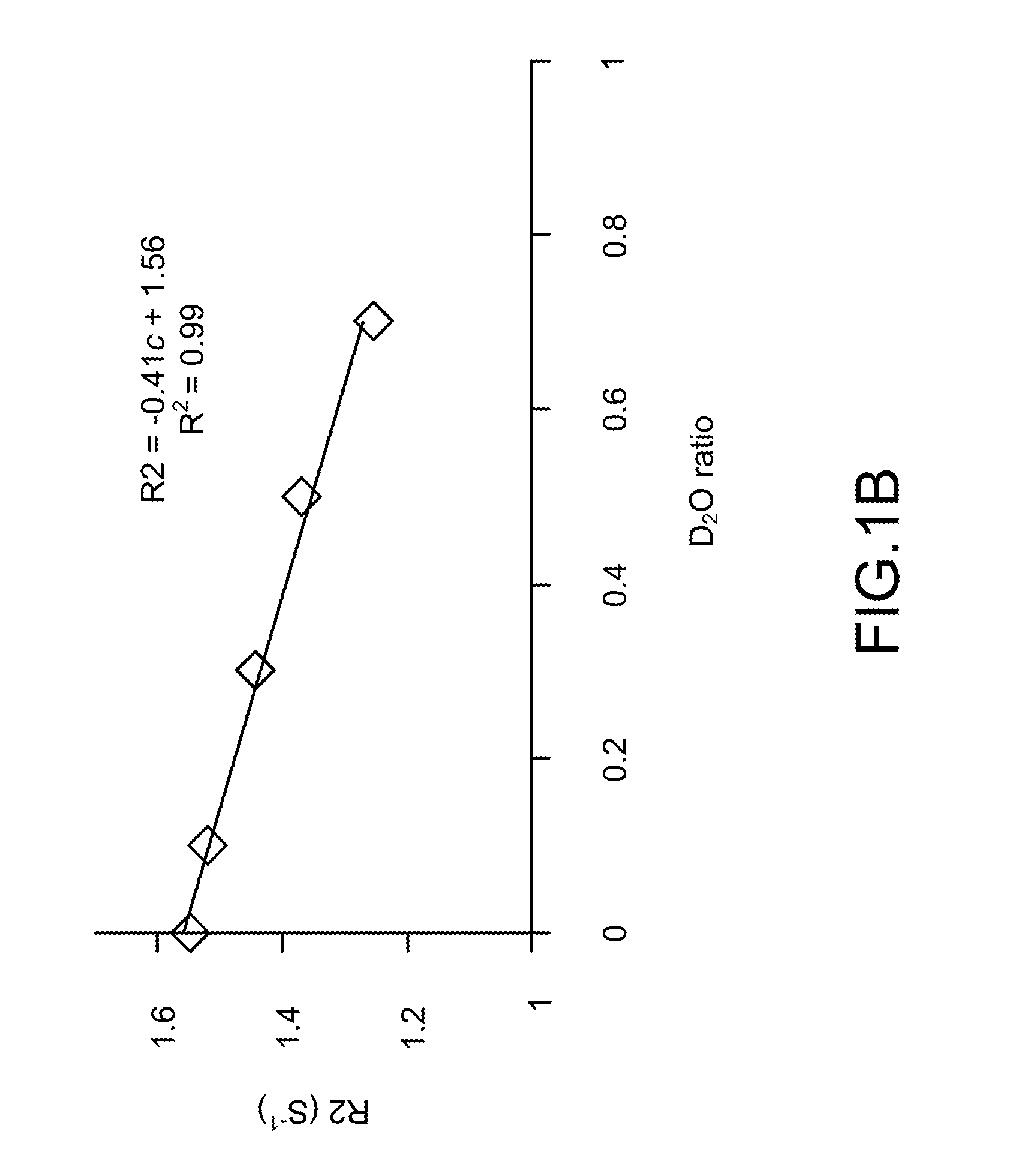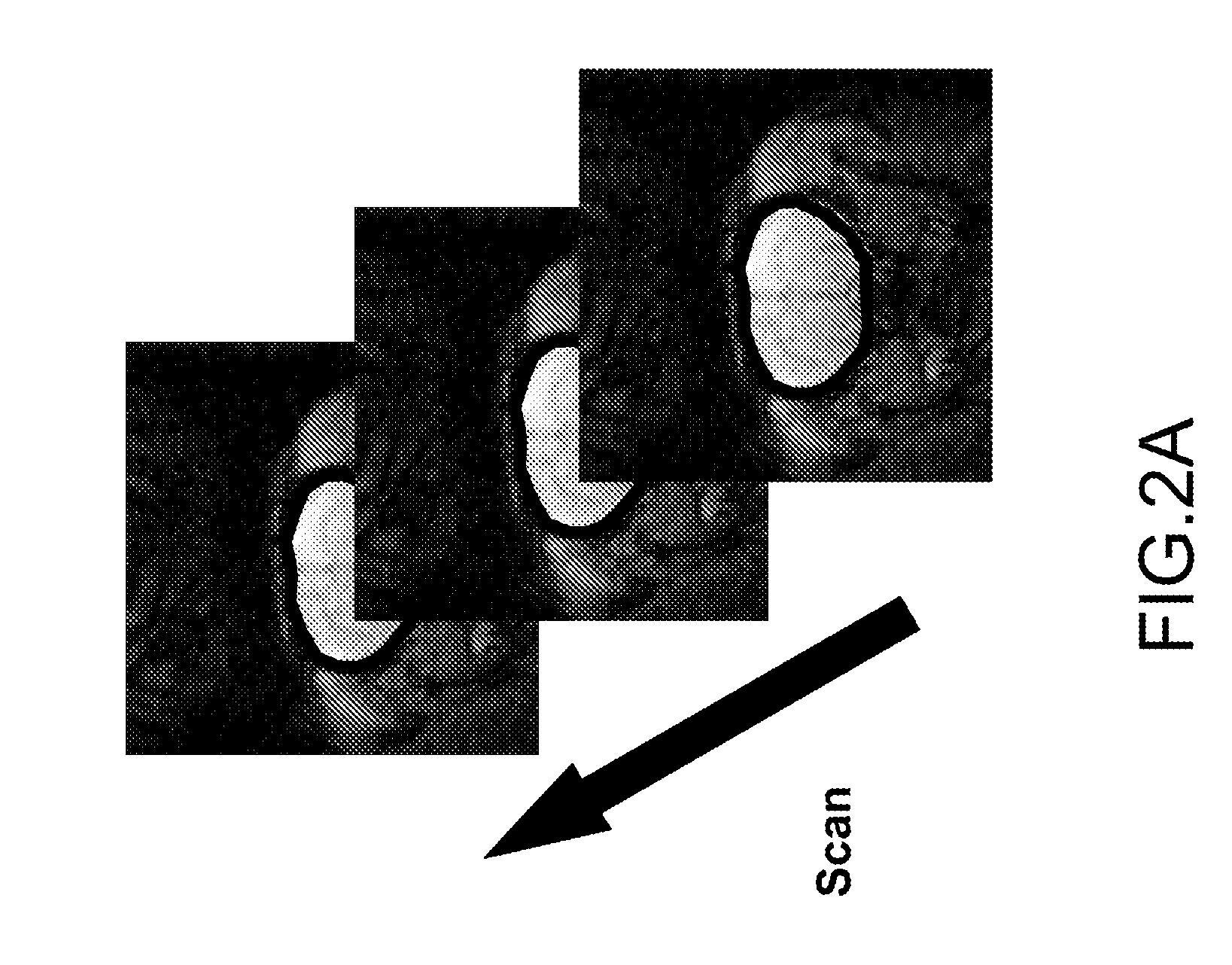Using Heavy Water as a Contrast Agent for Hydrogen Magnetic Resonance Imaging
a hydrogen magnetic resonance and contrast agent technology, applied in the field of heavy water as a contrast agent, can solve the problems of not meeting the needs of all users on actual use, low signal change limitation of asl, and affecting the t1 and t2 relaxation rate of h mri, so as to reduce the proton density property of h mri and generate image contrast. , the effect of slowing down the t1 and t2 relaxation rate of h mr
- Summary
- Abstract
- Description
- Claims
- Application Information
AI Technical Summary
Benefits of technology
Problems solved by technology
Method used
Image
Examples
Embodiment Construction
[0019]The following description of the preferred embodiment is provided to understand the features and the structures of the present invention. The present invention is a contrast agent of heavy water (D2O) for hydrogen magnetic resonance imaging (H MRI), where H MRI indirectly detects the deuterium (D) by measuring the difference of image intensities of H1 before and after administration of D2O. According to the theory of nuclear magnetic resonance, the signal-to-noise ratio (SNR) is improved by indirect detection since the H sensitivity is 100 times higher than the D.
[0020]Magnetic resonance imaging (MRI) is a method in which a magnetic field sent from the MRI machine aligns the hydrogen protons in the patient's body along the same vector. The radio waves then knock the particles out of the aligned positions. As the nuclei realign into proper position, the nuclei send out radio signals. These signals are received by a computer, analyzed and converted into an image.
[0021]Any nucleu...
PUM
 Login to View More
Login to View More Abstract
Description
Claims
Application Information
 Login to View More
Login to View More - Generate Ideas
- Intellectual Property
- Life Sciences
- Materials
- Tech Scout
- Unparalleled Data Quality
- Higher Quality Content
- 60% Fewer Hallucinations
Browse by: Latest US Patents, China's latest patents, Technical Efficacy Thesaurus, Application Domain, Technology Topic, Popular Technical Reports.
© 2025 PatSnap. All rights reserved.Legal|Privacy policy|Modern Slavery Act Transparency Statement|Sitemap|About US| Contact US: help@patsnap.com



